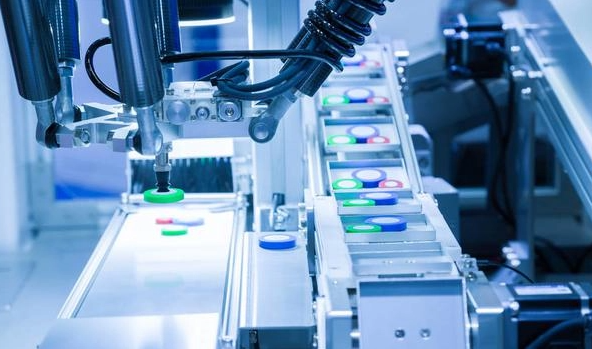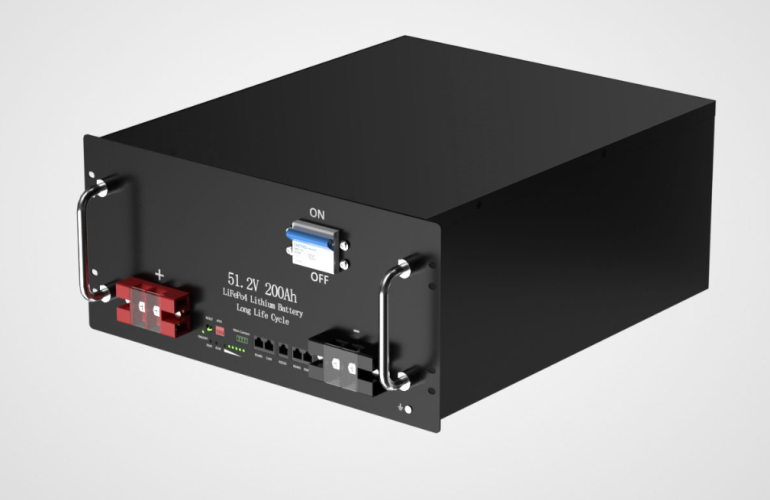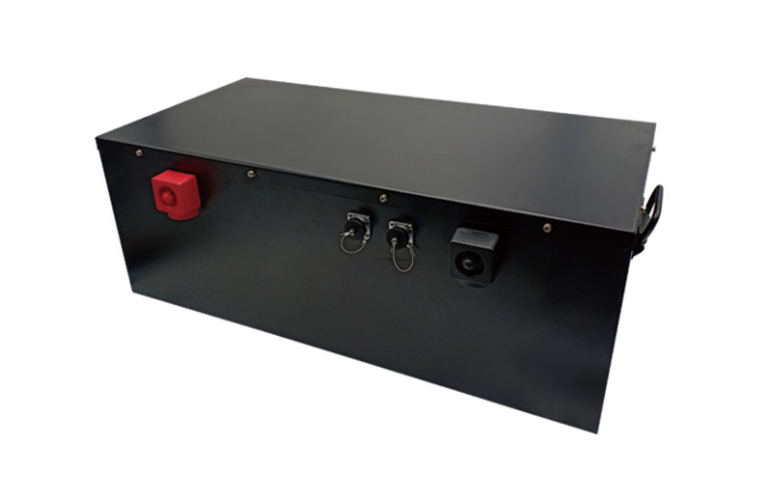If you’re looking for the answer to, “How do solar batteries work?”, this article will explain what a solar battery is, solar battery science, how solar batteries work with a solar power system, and the overall benefits of using solar battery storage.
A solar battery can be an important addition to your solar power system. It helps you store excess electricity that you can use when your solar panels aren’t generating enough energy, and gives you more options for how to power your home.
Below, we walk you through how energy storage systems work with solar and what that means for what you can expect to get from your storage system. We also take a more technical look at what exactly is happening inside of your battery to store that energy.
What is a Solar Battery?
Let’s start with a simple answer to the question, “What is a solar battery?”:
A solar battery is a device that you can add to your solar power system to store the excess electricity generated by your solar panels.You can then use that stored energy to power your home at times when your solar panels don’t generate enough electricity, including nights, cloudy days, and during power outages.
The point of a solar battery is to help you use more of the solar energy you’re creating. If you don’t have battery storage, any excess electricity from solar power goes to the grid, which means you’re generating power and providing it to other people without taking full advantage of the electricity your panels create first.
An overview of how solar batteries work step-by-step
At the highest level, solar batteries store energy for later use. If you have a home solar panel system, there are a few general steps to understand:
- Solar panels generate electricity from the sun
- This direct current (DC) electricity flows through an inverter to generate alternating current (AC) electricity
- The AC electricity powers your home appliances
- Extra electricity not used by your appliances charges your batteries
- When the sun goes down, your appliances are powered by the stored energy in your battery
The Science of Solar Batteries
Lithium-ion batteries are the most popular form of solar batteries currently on the market. This is the same technology used for smartphones and other high-tech batteries.
Lithium-ion batteries work through a chemical reaction that stores chemical energy before converting it to electrical energy. The reaction occurs when lithium ions release free electrons, and those electrons flow from the negatively-charged anode to the positively-charged cathode.
This movement is encouraged and enhanced by lithium-salt electrolyte, a liquid inside the battery that balances the reaction by providing the necessary positive ions. This flow of free electrons creates the current necessary for people to use electricity.
When you draw electricity from the battery, the lithium ions flow back across the electrolyte to the positive electrode. At the same time, electrons move from the negative electrode to the positive electrode via the outer circuit, powering the plugged-in device.
Home solar power storage batteries combine multiple ion battery cells with sophisticated electronics that regulate the performance and safety of the whole solar battery system. Thus, solar batteries function as rechargeable batteries that use the power of the sun as the initial input that kickstarts the whole process of creating an electrical current.
How does a solar battery work with solar panels?
In a typical home with existing solar panels, part, or all of your energy usage may come from solar generation while the sun is shining during the day. Any excess solar energy that is generated (and unused) is exported back to the grid in exchange for a feed-in tariff (FiT) that is credited to your bill (but this payment depends on the energy plan you are on). The feed-in tariff has declined over time. This means it can be more economical to store the energy for future use instead of exporting back to the grid. This is where a solar battery comes into play.
When you add a battery to an existing home solar system, the excess solar energy that isn’t used during the day can be used to charge your battery. Energy stored in your solar battery can then be used to power your household, for future use. This stored energy is particularly helpful when your solar panels are not generating enough, and you need to rely on the energy from the grid. In addition, it comes in very handy during those infrequent blackouts, helping you keep the lights on.
Below, we’ve listed how battery storage would work during the day and night:
During the day
- Solar panels absorb sunlight (UV rays)
- Solar energy travels as Direct Current (DC) through the solar inverter so it can be converted into Alternating Current (AC) energy that your appliances use
- The switchboard will then direct solar energy to where it’s needed. It will power the appliances in your home, then direct any excess energy to the battery inverter
- The battery inverter converts any excess energy captured into a form of energy that can be stored
- The battery stores the excess energy to use in peak periods, or when the sun goes down
At night
- Your solar panels will stop generating energy, allowing the household to switch to stored battery energy.
- The battery will send the excess energy stored to the battery inverter
- The battery inverter will then convert the energy stored in your battery to Direct Current (DC) energy for your appliances
- The switchboard will direct the DC energy to your chosen appliances
- When your battery charge runs out, the grid will kick in and replace it to continue providing energy to your appliances
How Solar Batteries Work with a Solar Power System
This entire process starts with the solar panels on the roof generating power. Here is a step-by-step breakdown of what happens with a DC-coupled system:
- Sunlight hits the solar panels and the energy is converted to DC electricity.
- The electricity enters the battery and is stored as DC electricity.
- The DC electricity then leaves the battery and enters an inverter to be converted into AC electricity the home can use.
The process is slightly different with an AC-coupled system.
- Sunlight hits the solar panels and the energy is converted to DC electricity.
- The electricity enters the inverter to be converted into AC electricity the home can use.
- Excess electricity then flows through another inverter to change back into DC electricity that can be stored for later.
- If the house needs to use the energy stored in the battery, that electricity must flow through the inverter again to become AC electricity.
How Solar Batteries Work with a Hybrid Inverter
If you have a hybrid inverter, a single device can convert DC electricity into AC electricity and can also convert AC electricity into DC electricity. As a result, you don’t need two inverters in your photovoltaic (PV) system: one to convert electricity from your solar panels (solar inverter) and another to convert electricity from the solar battery (battery inverter).
Also known as a battery-based inverter or hybrid grid-tied inverter, the hybrid inverter combines a battery inverter and solar inverter into a single piece of equipment. It eliminates the need to have two separate inverters in the same setup by functioning as an inverter for both the electricity from your solar battery and the electricity from your solar panels.
Hybrid inverters are growing in popularity because they work with and without battery storage. You can install a hybrid inverter into your battery-less solar power system during the initial installation, giving you the option of adding solar energy storage down the line.
What you get with a solar plus storage system
When you install a battery with your solar panel system, you’ll have the ability to pull from either the grid or your battery, when it’s charged. This has two major implications:
Batteries provide backup power
Even though you’ll still be connected to the grid, you can operate “off-grid” since pairing solar plus storage will create a little energy island at your home. So in the event of an outage, either due to extreme weather or a utility shutoff, you’ll still be able to keep your lights on.
Two things to note about backup power. First, if you just have a solar panel system without a battery, you will not have power in the event of an outage, even if it’s a sunny day. This is because your solar panel system will shut down in the event of a power outage so that it doesn’t send electricity onto transmission lines while utility workers are attempting to fix them, which would pose a safety risk.
Second, most batteries only provide backup power for part, not all, of your home. Unless you also install a smart electrical panel with your battery (which is a great way to get the most out of a storage system), most battery installations will require you to select what parts of your home you want to back up with the battery, and pull those loads onto a critical load panel. However, many batteries can be “stacked”, meaning you can keep adding additional batteries until you have the storage capacity you want. So while it might be possible to achieve whole-home backup, it can be cost prohibitive to purchase enough batteries to provide that level of backup.
Batteries can help you avoid high utility rates
By allowing you to pull from your battery instead of from the electric grid, pairing a storage system with your solar panels can help you to avoid high utility rates. There are two ways batteries can do this. First, if you are on a time of use or other time-varying rate, you can pull from your battery at the times when your utility charges more for electricity, i.e., during peak hours. And, second, if you are on a rate with a demand charge, which is more typical for commercial and industrial companies than for homeowners, a battery can help you lower your demand charge each month, which is a significant financial benefit.
How lithium ion batteries work
The most typical type of battery on the market today for home energy storage is a lithium ion battery. Lithium ion batteries power all sorts of every-day appliances, from cell phones to cars, so it’s a very well understood, safe technology.
Lithium ion batteries are so called because they work by moving lithium ions through an electrolyte inside of the battery. Since ions are particles that have gained or lost an electron, moving the lithium ions from an anode to a cathode produces free electrons, i.e., electrons that have been released from lithium atoms. The build up of these free electrons is how batteries ultimately charge and store electricity. When you discharge the electricity stored in the battery, the flow of lithium ions is reversed, meaning the process is repeatable: you can charge and discharge lithium ion batteries hundreds or even thousands of times.
Lithium ion batteries used in home energy storage systems combine multiple lithium ion battery cells with complex power electronics that control the performance and safety of the whole battery system. There are several different types of lithium ion batteries that use slightly different chemistries to offer varied attributes, from improved power density to longer lifetimes.
Notably, lithium ion batteries aren’t the only type of battery used in energy storage applications at the home, business or utility level. The other types of batteries store energy via similar mechanisms, with an entirely separate set of pros and cons.
Benefits of Solar Battery Storage
Adding battery backup for solar panels is a great way of ensuring you get the most out of your solar power system. Here are some of the main benefits of a home solar battery storage system:
Stores Excess Electricity Generation
Your solar panel system can often produce more power than you need, especially on sunny days when no one is at home. If you don’t have solar energy battery storage, the extra energy will be sent to the grid. If you participate in a net metering program, you can earn credit for that extra generation, but it’s usually not a 1:1 ratio for the electricity you generate.
With battery storage, the extra electricity charges up your battery for later use, instead of going to the grid. You can use the stored energy during times of lower generation, which reduces your reliance upon the grid for electricity.
Provides Relief from Power Outages
Since your batteries can store the excess energy created by your solar panels, your home will have electricity available during power outages and other times when the grid goes down.
Reduces Your Carbon Footprint
With solar panel battery storage, you can go green by making the most of the clean energy produced by your solar panel system. If that energy isn’t stored, you will rely on the grid when your solar panels don’t generate enough for your needs. However, most grid electricity is produced using fossil fuels, so you will likely be running on dirty energy when drawing from the grid.
Provides Electricity Even After the Sun Goes Down
When the sun goes down and solar panels aren’t generating electricity, the grid steps in to provide much-needed power if you don’t have any battery storage. With a solar battery, you’ll use more of your own solar electricity at night, giving you more energy independence and helping you keep your electric bill low.
A Quiet Solution to Backup Power Needs
A solar power battery is a 100% noiseless backup power storage option. You get to benefit from maintenance free clean energy, and don’t have to deal with the noise that comes from a gas-powered backup generator.
Frequently Asked Questions
What happens to solar power when batteries are full?
When this happens, any excess solar power that is generated will typically not be stored in the batteries, and instead, it will be sent back to the electricity grid or wasted. In the case of a grid-connected solar power system, excess solar power can be sent back to the grid for use by other consumers.
How long will a solar battery run?
between 5 to 25 years
On average, solar batteries last between 5 to 25 years. Lithium-ion batteries are the most prevalent solar battery type and have a lifespan of up to 15 years. Some factors that impact a solar battery’s longevity are battery type, installation, depth of discharge, cycle life, environment and maintenance.
How long does a fully charged solar battery last?
How long can a solar battery power a house? Without running AC or electric heat, a 10 kWh battery alone can power the basic operations of a house for at least 24 hours, and longer with careful budgeting.
Should solar batteries be charged to 100%?
The battery could be charged up to 100% if the load requires a voltage boost for a short amount of time. Range between 40% and 80% is the most stable range (approximately 0.5 Volt drop). It means that in this range, the battery will slowly discharge and will yield the rated output voltage.
Do solar batteries recharge themselves?
The best thing about solar batteries is that they do not require electricity or any other external source to charge themselves, unlike regular rechargeable batteries. Solar batteries can be charged with the help of the sun’s rays, which is one of the reasons why these batteries are so popular among people.
Do solar batteries charge at night?
Solar panels work hard all day producing electricity from the sun. They also support sustainable solar energy solutions at night. You can continue benefiting from their energy production after sunset through net metering and solar battery storage. So, when you ask, how do solar panels work at night?
How do you check solar battery life?
The first way to do this is the easiest: first, charge the deep cycle batteries within your solar battery bank fully. Next, check the voltage of each battery using a multimeter and make a note of each level, then let them sit without a connection to any solar panel for a few days.
What causes solar battery failure?
About 80% of failures are caused by sulfation, a process where sulfur crystals form on the battery’s lead plates and prevent chemical reactions from happening. Sulfation occurs when the battery has a low charge or electrolyte level.




